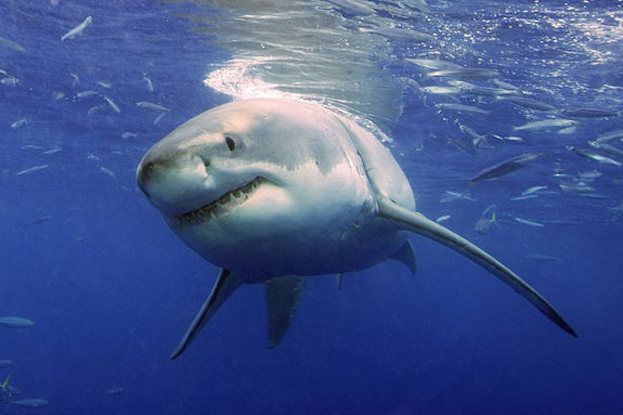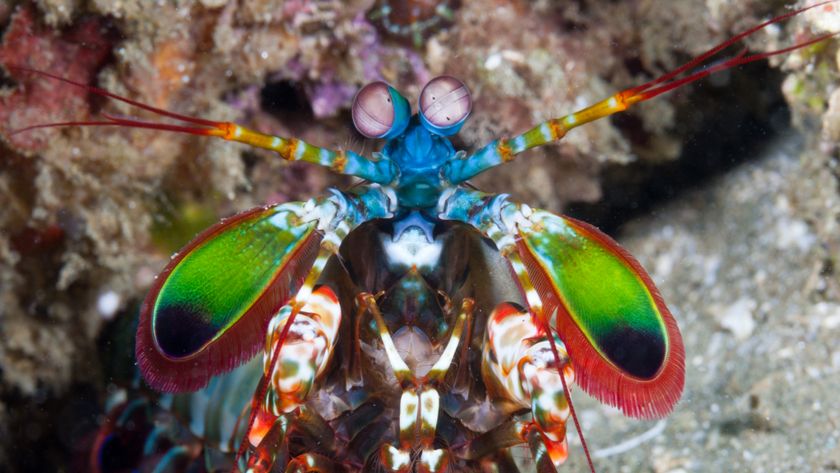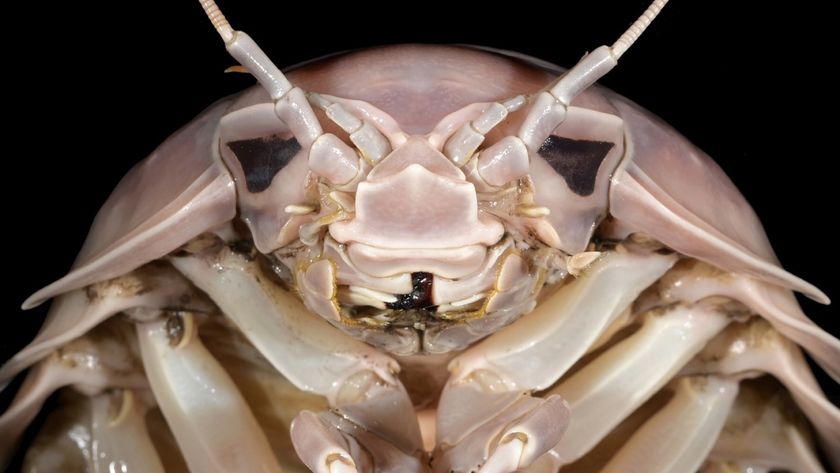Shrimpy Sharks to Great Whites: Marine Animals Have Gotten Bigger Over Time

Animals tend to evolve toward a larger body size over time, and marine animals are no exception, a study suggests.
In fact, the average size of marine animals has increased significantly over the past 542 million years, according to researchers who recently compared the body sizes of ocean-dwelling creatures from five major groups ranging from arthropods to vertebrates.
The findings support a theory that biologists call Cope's rule, which holds that animals in a given group tend to grow larger over the course of their evolution, the researchers said. [New Size Estimates for Large Ocean Animals (Infographic)]
Cope's rule is named after American paleontologist Edward Cope. It was formulated in the late 19th century not by Cope himself, but by paleontologists who noticed that land animals such as horses and dinosaurs tended to become larger over time. There are exceptions to the rule; for example, birds do not follow this trend.
The rule "has been studied a whole lot in terrestrial animals, and mammals in particular," said Noel Heim, a paleontologist at Stanford University and co-author of the study published today (Feb. 19) in the journal Science. But "there's been much less work in a marine setting," he added.
To change that, Heim and his colleagues looked at published studies that included data on the body sizes of more than 17,000 types of marine animals from five major groups, including arthropods (shrimps, lobsters, crabs), chordates (fish, whales, seals), echinoderms (starfish, sea urchins), mollusks (squid, clams), and brachiopods (lamp shells).
"One of main findings is that marine animals as a whole do show Cope's rule," Heim said. The average marine creature today is about 150 times larger than its counterparts that lived during the Cambrian period, which lasted from 541 million years ago to 485.4 million years ago.
Sign up for the Live Science daily newsletter now
Get the world’s most fascinating discoveries delivered straight to your inbox.
For example, a 372-million-year-old shark from the genus Falcatus, the oldest shark in the study dataset, was about 6 inches long (15 centimeters), whereas the largest modern great white shark (Carcharodon carcharias) in the database was about 26 feet long (7.9 meters), Heim said.
But when the researchers looked at individual groups of animals, there was some variation. Four of the five animal groups they looked have gotten larger, but arthropods actually grew smaller over time, Heim said.
But it's unclear why most of the animals evolved to become larger over time.
"We don't really have a concrete idea," Heim said. One possibility is that predators need to be active in order to hunt their prey, and bigger animals have higher metabolic rates, and thus more active lifestyles. There's been a general trend of increased predation over time, Heim said.
Another possibility is that some animals became larger in order to take advantage of increased oxygen levels in the air. Marine mammals evolved from land mammals that went back into the oceans, so they may have needed to be larger to breathe enough oxygen. But these are just hypotheses, and haven't been tested, Heim said.
Will animals get even bigger in the future?
"In the short term, there's certainly evidence [the animals] will continue to get bigger," Heim said. Scientists suspect that animals eventually reach a limit in size, when they won't be able to eat enough food to power their bodies. However, he said, "There's nothing absolutely predictable in the future."
Follow Tanya Lewis on Twitter. Follow us @livescience, Facebook & Google+. Original article on Live Science.












